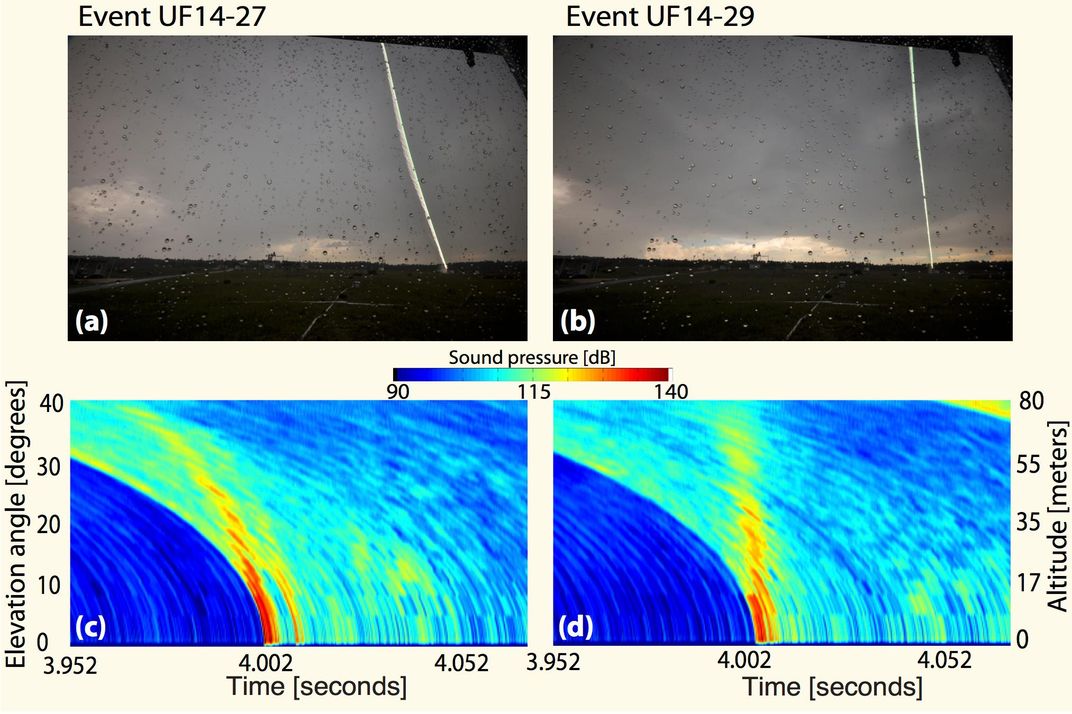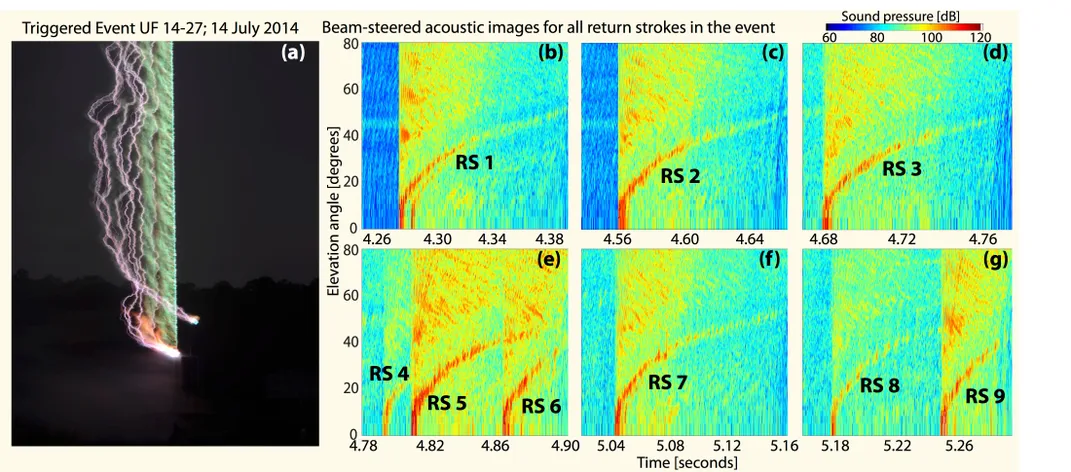Rockets and Microphones Reveal the First Images of Thunder
The acoustic visuals could help us better understand the physical processes that drive lightning strikes
/https://tf-cmsv2-smithsonianmag-media.s3.amazonaws.com/filer/06/3b/063beaec-f1d0-45ad-8db4-1578c7cda389/42-69041904.jpg)
It's a phenomenon everyone has heard but no one has been able to see—until now. Using rockets, copper wire and acoustic gear, scientists have created vivid images of thunder as it propagates from a lightning bolt.
“This is the first of its kind,” Maher A. Dayeh of the Southwest Research Institute said today at a press conference at the American Geophysical Union’s Joint Assembly in Montreal. “This is just a proof of concept. A much more sophisticated display would give us more details,” allowing investigation of the various parts of a branching lightning bolt.
Lightning strikes the Earth more than four million times every day, or dozens of times every second. The powerful bolts have long been a mystery, but scientists are learning more each year about how they are generated and where they will strike. For instance, some research suggests that cosmic rays from space may play a role in triggering lightning.
Thunder is even less well understood. Researchers know that lightning heats the air, creating a shockwave. Close up, that can manifest as a loud boom or a hard crack; farther away, all that may be heard are rumbles. “We understand the general mechanics of how thunder appears,” Dayeh says, but the processes that contribute to that frightening sound have yet to be revealed.
To create an image of thunder, Dayeh and his colleagues devised “a special ear to hear where thunder is coming from.” Their technique relies on a rocket carrying a conductive copper wire, which provides a predictable path for lightning to follow. An array of 15 microphones sitting on the ground then collected the sounds associated with the triggered strikes.
“Instead of waiting for a lightning strike, you bring lightning to you,” Dayeh says. The team conducted their experiments last July 14, when conditions were ripe for thunderstorms near Gainesville, Florida. After the rocket went up, a flash of green lit the sky. This was the copper wire burning up. Then nine purplish flashes zigzagged to the ground, accompanied by thunder that was recorded with the microphones. Dayeh took those recordings and processed them to create an image of the sound.
Dayeh’s first image was jumbled and looked somewhat like modern art—he even suggested to his wife they hang the picture over their fireplace, but she declined. When he filtered out lower-frequency sounds and focused only on those greater than 1 megahertz, the image cleared up and thunder could be deciphered—the sound waves curved in reds and oranges against a background of blues and greens.
The shape of the curve matched that of the lightning bolt, and the darkest red, where the sound was loudest, appeared at the base of the bolt where it attached to the ground. Now that the team has shown it is possible to acoustically image thunder, Dayeh hopes the technique will enable better understanding of these fascinating and sometimes deadly phenomena.
/https://tf-cmsv2-smithsonianmag-media.s3.amazonaws.com/accounts/headshot/Sarah-Zielinski-240.jpg)


/https://tf-cmsv2-smithsonianmag-media.s3.amazonaws.com/accounts/headshot/Sarah-Zielinski-240.jpg)